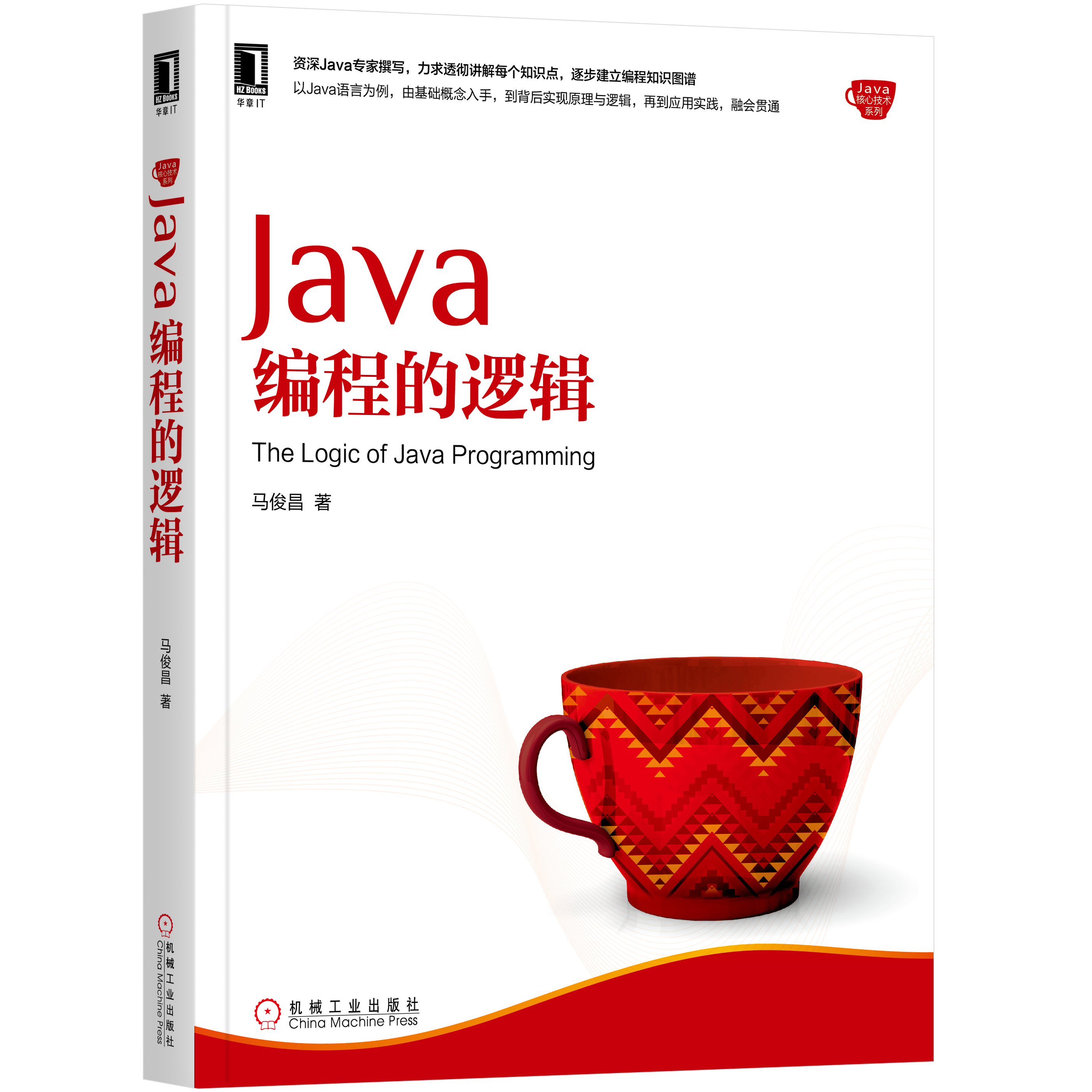Java编程的逻辑 (68) - 线程的基本协作机制 (下)
本系列文章经补充和完善,已修订整理成书《Java编程的逻辑》,由机械工业出版社华章分社出版,于2018年1月上市热销,读者好评如潮!各大网店和书店有售,欢迎购买,京东自营链接:http://item.jd.com/12299018.html

本节继续上节的内容,探讨如何使用wait/notify实现更多的协作场景。
同时开始
同时开始,类似于运动员比赛,在听到比赛开始枪响后同时开始,下面,我们模拟下这个过程,这里,有一个主线程和N个子线程,每个子线程模拟一个运动员,主线程模拟裁判,它们协作的共享变量是一个开始信号。我们用一个类FireFlag来表示这个协作对象,代码如下所示:
static class FireFlag { private volatile boolean fired = false; public synchronized void waitForFire() throws InterruptedException { while (!fired) { wait(); } } public synchronized void fire() { this.fired = true; notifyAll(); } }
子线程应该调用waitForFire()等待枪响,而主线程应该调用fire()发射比赛开始信号。
表示比赛运动员的类如下:
static class Racer extends Thread { FireFlag fireFlag; public Racer(FireFlag fireFlag) { this.fireFlag = fireFlag; } @Override public void run() { try { this.fireFlag.waitForFire(); System.out.println("start run " + Thread.currentThread().getName()); } catch (InterruptedException e) { } } }
主程序代码如下所示:
public static void main(String[] args) throws InterruptedException { int num = 10; FireFlag fireFlag = new FireFlag(); Thread[] racers = new Thread[num]; for (int i = 0; i < num; i++) { racers[i] = new Racer(fireFlag); racers[i].start(); } Thread.sleep(1000); fireFlag.fire(); }
这里,启动了10个子线程,每个子线程启动后等待fire信号,主线程调用fire()后各个子线程才开始执行后续操作。
等待结束
理解join
在理解Synchronized一节中我们使用join方法让主线程等待子线程结束,join实际上就是调用了wait,其主要代码是:
while (isAlive()) { wait(0); }
只要线程是活着的,isAlive()返回true,join就一直等待。谁来通知它呢?当线程运行结束的时候,Java系统调用notifyAll来通知。
使用协作对象
使用join有时比较麻烦,需要主线程逐一等待每个子线程。这里,我们演示一种新的写法。主线程与各个子线程协作的共享变量是一个数,这个数表示未完成的线程个数,初始值为子线程个数,主线程等待该值变为0,而每个子线程结束后都将该值减一,当减为0时调用notifyAll,我们用MyLatch来表示这个协作对象,示例代码如下:
public class MyLatch { private int count; public MyLatch(int count) { this.count = count; } public synchronized void await() throws InterruptedException { while (count > 0) { wait(); } } public synchronized void countDown() { count--; if (count <= 0) { notifyAll(); } } }
这里,MyLatch构造方法的参数count应初始化为子线程的个数,主线程应该调用await(),而子线程在执行完后应该调用countDown()。
工作子线程的示例代码如下:
static class Worker extends Thread { MyLatch latch; public Worker(MyLatch latch) { this.latch = latch; } @Override public void run() { try { // simulate working on task Thread.sleep((int) (Math.random() * 1000)); this.latch.countDown(); } catch (InterruptedException e) { } } }
主线程的示例代码如下:
public static void main(String[] args) throws InterruptedException { int workerNum = 100; MyLatch latch = new MyLatch(workerNum); Worker[] workers = new Worker[workerNum]; for (int i = 0; i < workerNum; i++) { workers[i] = new Worker(latch); workers[i].start(); } latch.await(); System.out.println("collect worker results"); }
MyLatch是一个用于同步协作的工具类,主要用于演示基本原理,在Java中有一个专门的同步类CountDownLatch,在实际开发中应该使用它,关于CountDownLatch,我们会在后续章节介绍。
MyLatch的功能是比较通用的,它也可以应用于上面"同时开始"的场景,初始值设为1,Racer类调用await(),主线程调用countDown()即可,如下所示:
public class RacerWithLatchDemo { static class Racer extends Thread { MyLatch latch; public Racer(MyLatch latch) { this.latch = latch; } @Override public void run() { try { this.latch.await(); System.out.println("start run " + Thread.currentThread().getName()); } catch (InterruptedException e) { } } } public static void main(String[] args) throws InterruptedException { int num = 10; MyLatch latch = new MyLatch(1); Thread[] racers = new Thread[num]; for (int i = 0; i < num; i++) { racers[i] = new Racer(latch); racers[i].start(); } Thread.sleep(1000); latch.countDown(); } }
异步结果
在主从模式中,手工创建线程往往比较麻烦,一种常见的模式是异步调用,异步调用返回一个一般称为Promise或Future的对象,通过它可以获得最终的结果。在Java中,表示子任务的接口是Callable,声明为:
public interface Callable<V> { V call() throws Exception; }
为表示异步调用的结果,我们定义一个接口MyFuture,如下所示:
public interface MyFuture <V> { V get() throws Exception ; }
这个接口的get方法返回真正的结果,如果结果还没有计算完成,get会阻塞直到计算完成,如果调用过程发生异常,则get方法抛出调用过程中的异常。
为方便主线程调用子任务,我们定义一个类MyExecutor,其中定义一个public方法execute,表示执行子任务并返回异步结果,声明如下:
public <V> MyFuture<V> execute(final Callable<V> task)
利用该方法,对于主线程,它就不需要创建并管理子线程了,并且可以方便地获取异步调用的结果,比如,在主线程中,可以类似这样启动异步调用并获取结果:
public static void main(String[] args) { MyExecutor executor = new MyExecutor(); // 子任务 Callable<Integer> subTask = new Callable<Integer>() { @Override public Integer call() throws Exception { // ... 执行异步任务 int millis = (int) (Math.random() * 1000); Thread.sleep(millis); return millis; } }; // 异步调用,返回一个MyFuture对象 MyFuture<Integer> future = executor.execute(subTask); // ... 执行其他操作 try { // 获取异步调用的结果 Integer result = future.get(); System.out.println(result); } catch (Exception e) { e.printStackTrace(); } }
MyExecutor的execute方法是怎么实现的呢?它封装了创建子线程,同步获取结果的过程,它会创建一个执行子线程,该子线程的代码如下所示:
static class ExecuteThread<V> extends Thread { private V result = null; private Exception exception = null; private boolean done = false; private Callable<V> task; private Object lock; public ExecuteThread(Callable<V> task, Object lock) { this.task = task; this.lock = lock; } @Override public void run() { try { result = task.call(); } catch (Exception e) { exception = e; } finally { synchronized (lock) { done = true; lock.notifyAll(); } } } public V getResult() { return result; } public boolean isDone() { return done; } public Exception getException() { return exception; } }
这个子线程执行实际的子任务,记录执行结果到result变量、异常到exception变量,执行结束后设置共享状态变量done为true并调用notifyAll以唤醒可能在等待结果的主线程。
MyExecutor的execute的方法的代码为:
public <V> MyFuture<V> execute(final Callable<V> task) { final Object lock = new Object(); final ExecuteThread<V> thread = new ExecuteThread<>(task, lock); thread.start(); MyFuture<V> future = new MyFuture<V>() { @Override public V get() throws Exception { synchronized (lock) { while (!thread.isDone()) { try { lock.wait(); } catch (InterruptedException e) { } } if (thread.getException() != null) { throw thread.getException(); } return thread.getResult(); } } }; return future; }
execute启动一个线程,并返回MyFuture对象,MyFuture的get方法会阻塞等待直到线程运行结束。
以上的MyExecutore和MyFuture主要用于演示基本原理,实际上,Java中已经包含了一套完善的框架Executors,相关的部分接口和类有:
- 表示异步结果的接口Future和实现类FutureTask
- 用于执行异步任务的接口Executor、以及有更多功能的子接口ExecutorService
- 用于创建Executor和ExecutorService的工厂方法类Executors
后续章节,我们会详细介绍这套框架。
集合点
各个线程先是分头行动,然后各自到达一个集合点,在集合点需要集齐所有线程,交换数据,然后再进行下一步动作。怎么表示这种协作呢?协作的共享变量依然是一个数,这个数表示未到集合点的线程个数,初始值为子线程个数,每个线程到达集合点后将该值减一,如果不为0,表示还有别的线程未到,进行等待,如果变为0,表示自己是最后一个到的,调用notifyAll唤醒所有线程。我们用AssemblePoint类来表示这个协作对象,示例代码如下:
public class AssemblePoint { private int n; public AssemblePoint(int n) { this.n = n; } public synchronized void await() throws InterruptedException { if (n > 0) { n--; if (n == 0) { notifyAll(); } else { while (n != 0) { wait(); } } } } }
多个游客线程,各自先独立运行,然后使用该协作对象到达集合点进行同步的示例代码如下:
public class AssemblePointDemo { static class Tourist extends Thread { AssemblePoint ap; public Tourist(AssemblePoint ap) { this.ap = ap; } @Override public void run() { try { // 模拟先各自独立运行 Thread.sleep((int) (Math.random() * 1000)); // 集合 ap.await(); System.out.println("arrived"); // ... 集合后执行其他操作 } catch (InterruptedException e) { } } } public static void main(String[] args) { int num = 10; Tourist[] threads = new Tourist[num]; AssemblePoint ap = new AssemblePoint(num); for (int i = 0; i < num; i++) { threads[i] = new Tourist(ap); threads[i].start(); } } }
这里实现的是AssemblePoint主要用于演示基本原理,Java中有一个专门的同步工具类CyclicBarrier可以替代它,关于该类,我们后续章节介绍。
小结
上节和本节介绍了Java中线程间协作的基本机制wait/notify,协作关键要想清楚协作的共享变量和条件是什么,为进一步理解,针对多种协作场景,我们演示了wait/notify的用法及基本协作原理,Java中有专门为协作而建的阻塞队列、同步工具类、以及Executors框架,我们会在后续章节介绍,在实际开发中,应该尽量使用这些现成的类,而非重新发明轮子。
之前,我们多次碰到了InterruptedException并选择了忽略,现在是时候进一步了解它了。
(与其他章节一样,本节所有代码位于 https://github.com/swiftma/program-logic)
----------------
未完待续,查看最新文章,敬请关注微信公众号“老马说编程”(扫描下方二维码),从入门到高级,深入浅出,老马和你一起探索Java编程及计算机技术的本质。用心原创,保留所有版权。




